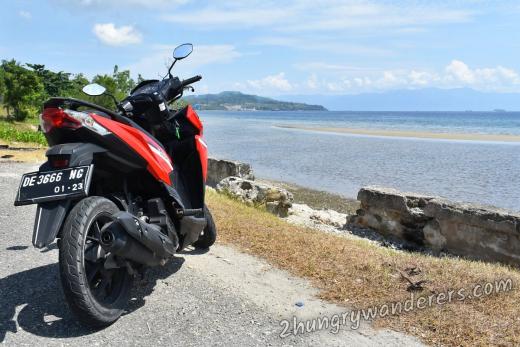
Note: This post is a part of our adventure in Ambon, you can jump to the other days here: Day 1: Museum and beaches and Day 3: Sacred eels, fading history and beaches, or if you haven't already - read this first:
Day two is the central north where some of the oldest temples in the region can be found just minutes from a well preserved Dutch fort. We spent the afternoon snorkelling at a quiet little bay, mistakenly called a beach.
Our route for the day on Google Maps.
We headed to the small town of Hila, home of three worthwhile attractions - Fort Amsterdam, an old church and an even older mosque, all within walking distance. Hila is located on north side of Ambon island, about 35 km from Kota Ambon. Heading north and going over the bridge crossing Ambon Bay offers great views in every direction. After this, there are about 5 more kilometres of city traffic, then leaving the busy streets is a breath of fresh air, literally and figuratively. The rest of the way is a quiet country road going through small villages and towns nestled between the hills and then follows the north coastline very closely. We reached Hila in about an hour and a half and headed to the main attraction.
Fort Amsterdam (Benteng Amsterdam, Blokhuis Amsterdam)
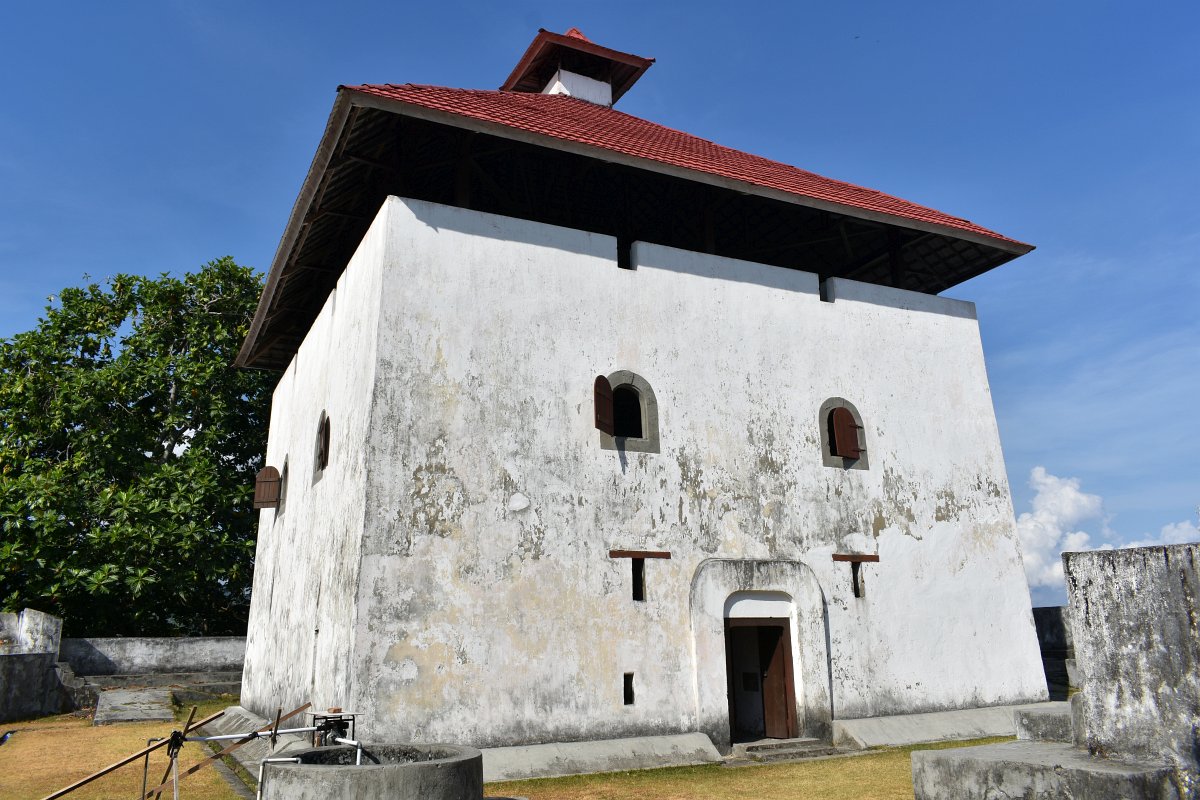
The fort was built by the Dutch in 1637 as part of their efforts to strengthen the defences of their newly colonized territories. Used for centuries, it was abandoned in the 1940s, neglected for decades until its restoration in 1991.
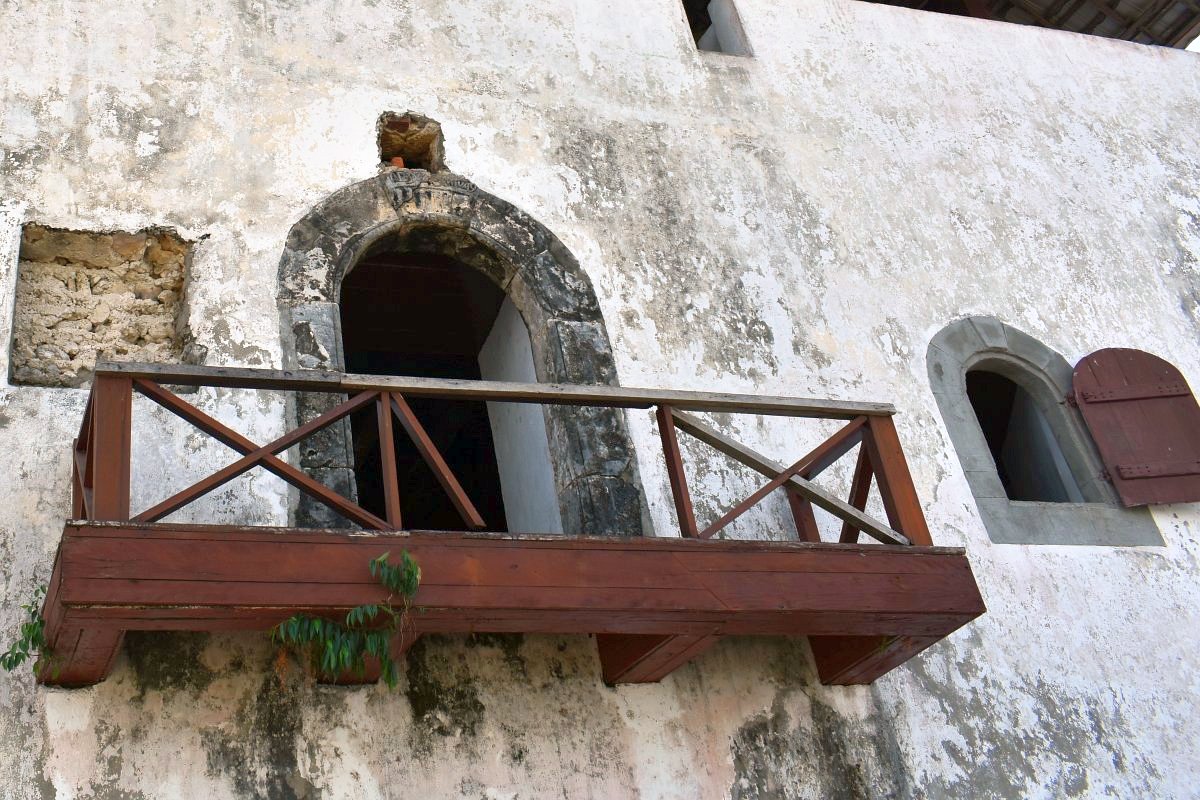
Now, the white, almost-cube shaped building stands proudly, still keeping an eye on the ocean through its tiny windows. All three floors inside are open for visitors offering a glimpse into a bygone era.
Gereja Tua Immanuel (The Church of Immanuel)
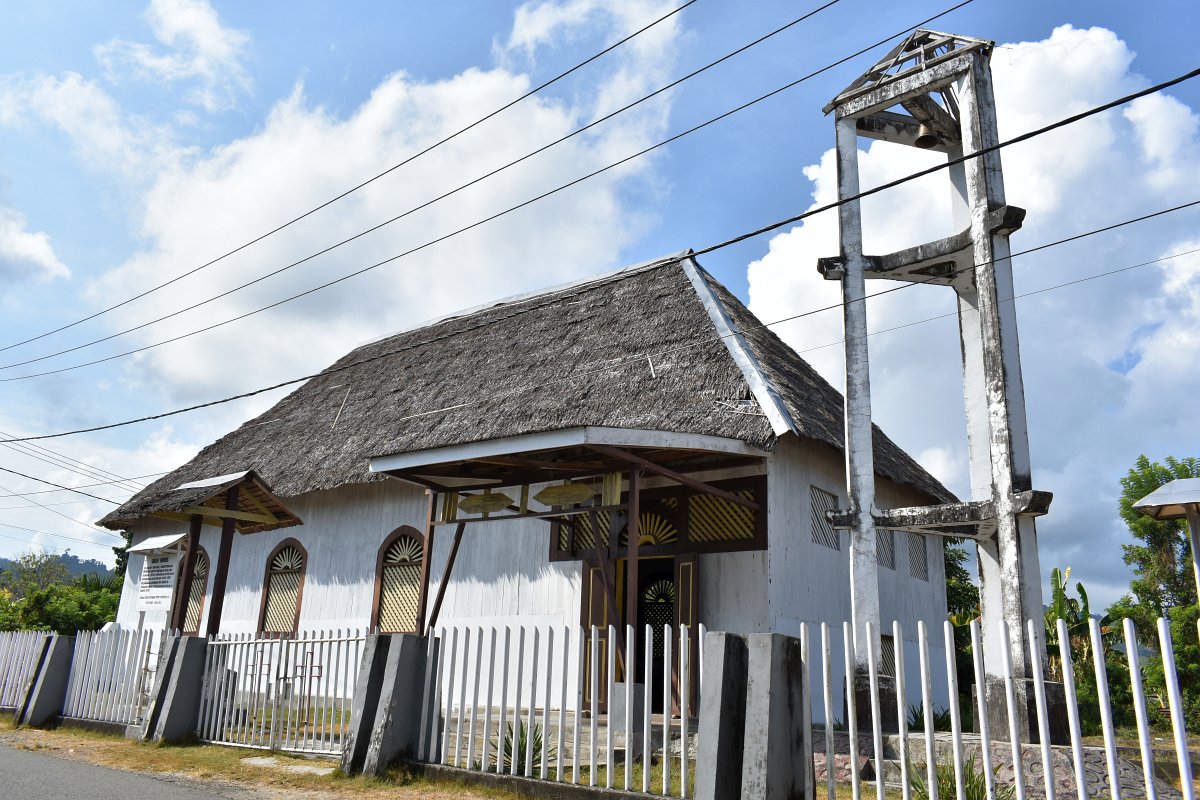
Just a hundred meters from the fort is the oldest church in the Maluku Province, which was built in 1659. Very simple, yet charming, the rectangle building is covered by a thatched roof, a popular approach in the area.
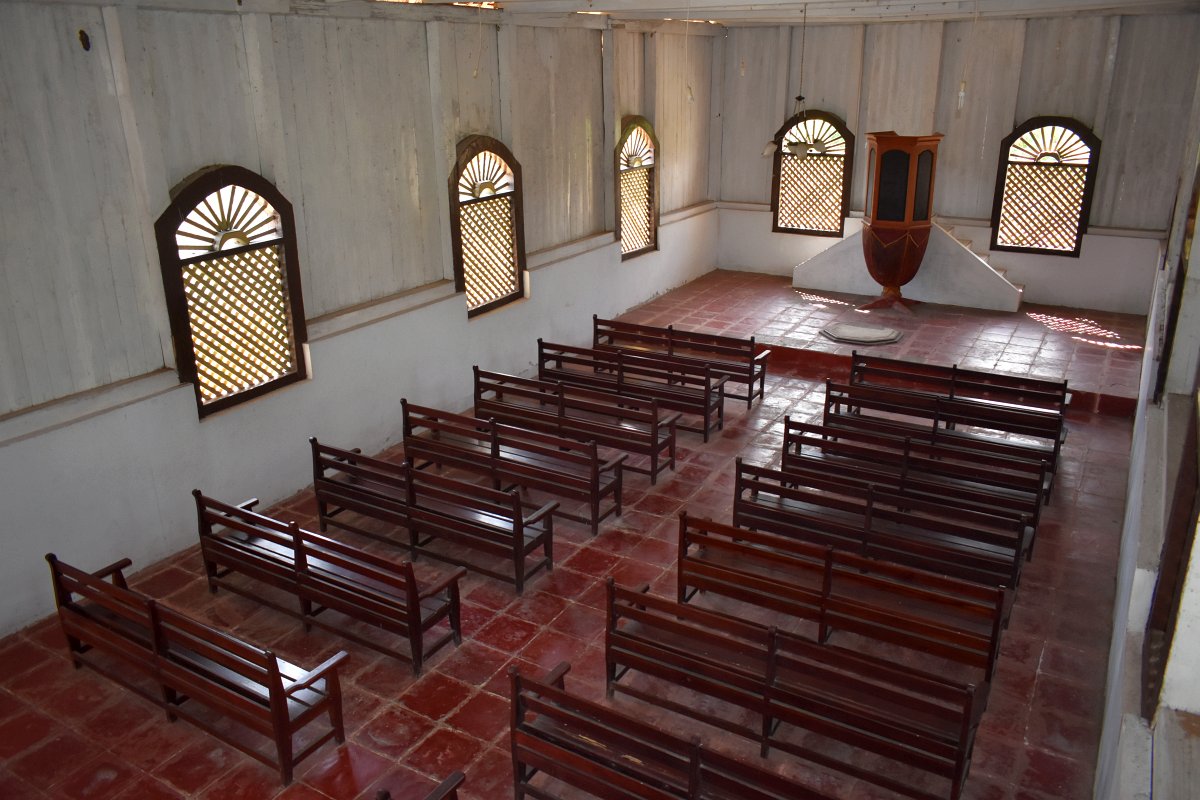
An interesting sight can be found right by the entrance - some of the original tiles are left there, showing clear signs of fire damage - the church was almost completely destroyed by a fire in the 18th century.
Wapauwe Old Mosque (Masjid Tua Wapauwe)
Another case where Google Maps does not match the real world, but a friendly local pointed us in the right direction and we found the place in minutes. The oldest mosque in the region and probably the oldest in Indonesia dating back to 1414.
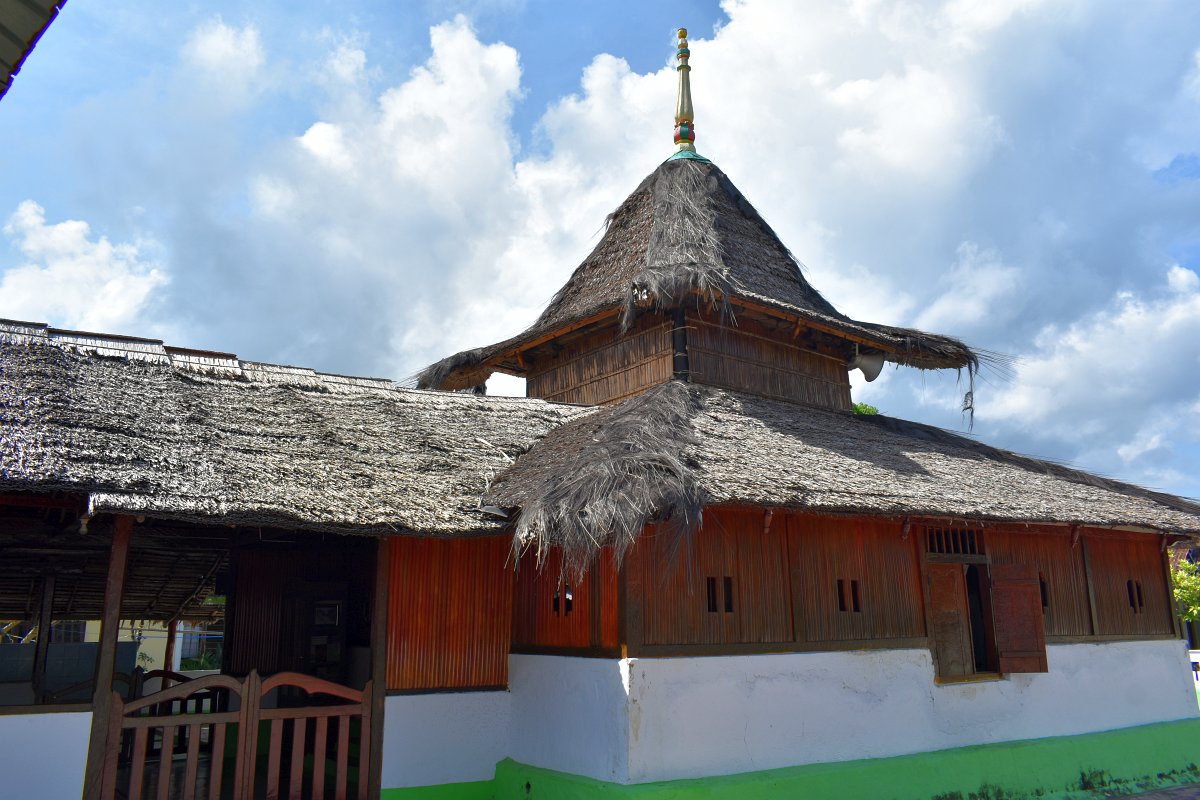
Such a long history has some interesting moments, for example in 1614 the local imam decided to move the mosque from its original place to where we can find it now. This was a journey made by the whole community, leaving more distance between them and the Dutch in hopes of avoiding conflict. The whole construction was dismantled, transported 6 km and re-assembled exactly the way it was - from the wooden pillars to the palm tree leaves roof. In the 18th century, the modest building was upgraded with the spire, but no minaret has ever been added. Multiple renovations have been done over the centuries, luckily didn't involve structural or material changes, giving us the opportunity to see a very authentic, over 600 years old house of worship.

All the treasures from the mosque, old religious texts and artifacts were moved to a museum a long time ago, but on our visit the windows were open and we got a chance to peek inside.
Kept in great condition, despite being made of such frail materials, it just makes you think about the countless generations of villagers who have been using and taking care of the mosque.
Along the route today
The world is full of unremarkable shops and stalls, this one, however caught our attention
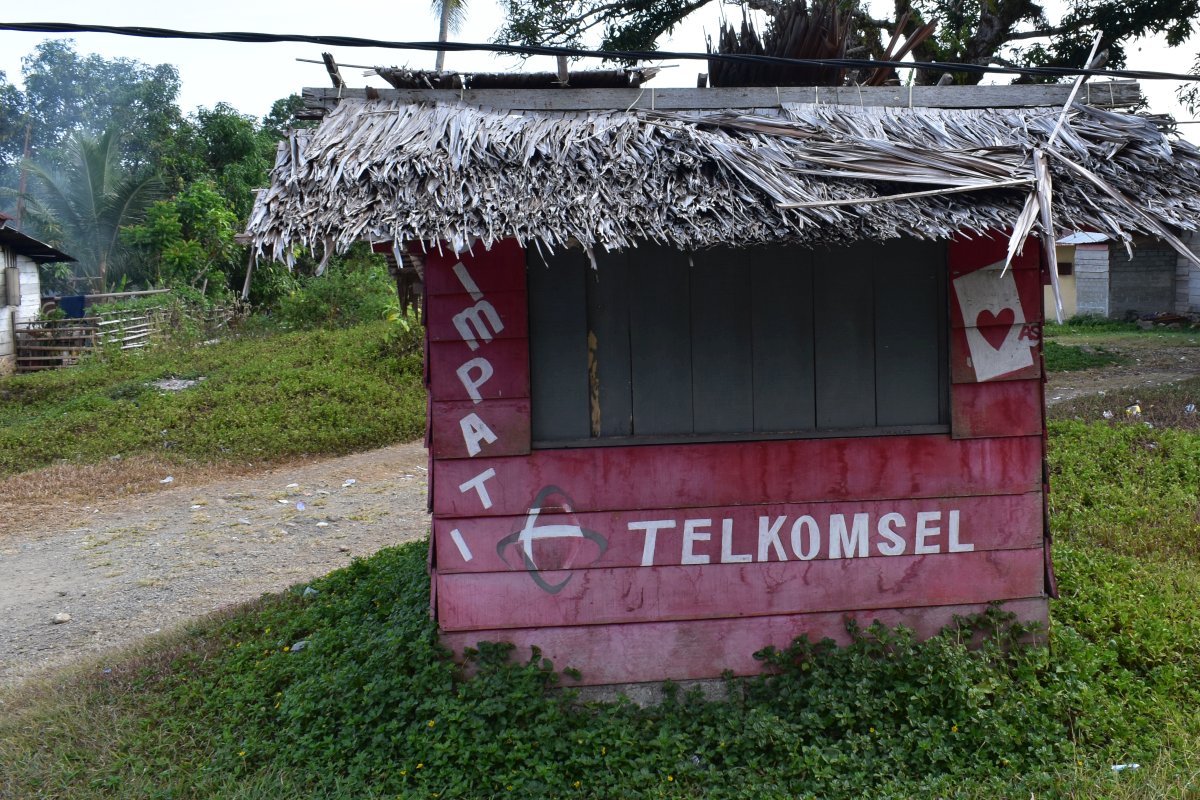
This impressive bridge spanning over Ambon Bay was completed in 2016 and now connects the two parts of the island. Locals are so proud of it, it is actually the official landmark of the city. Crossing is now mere minutes using the wide and smooth road, a great improvement over the slow ferries and huge detours from years ago.
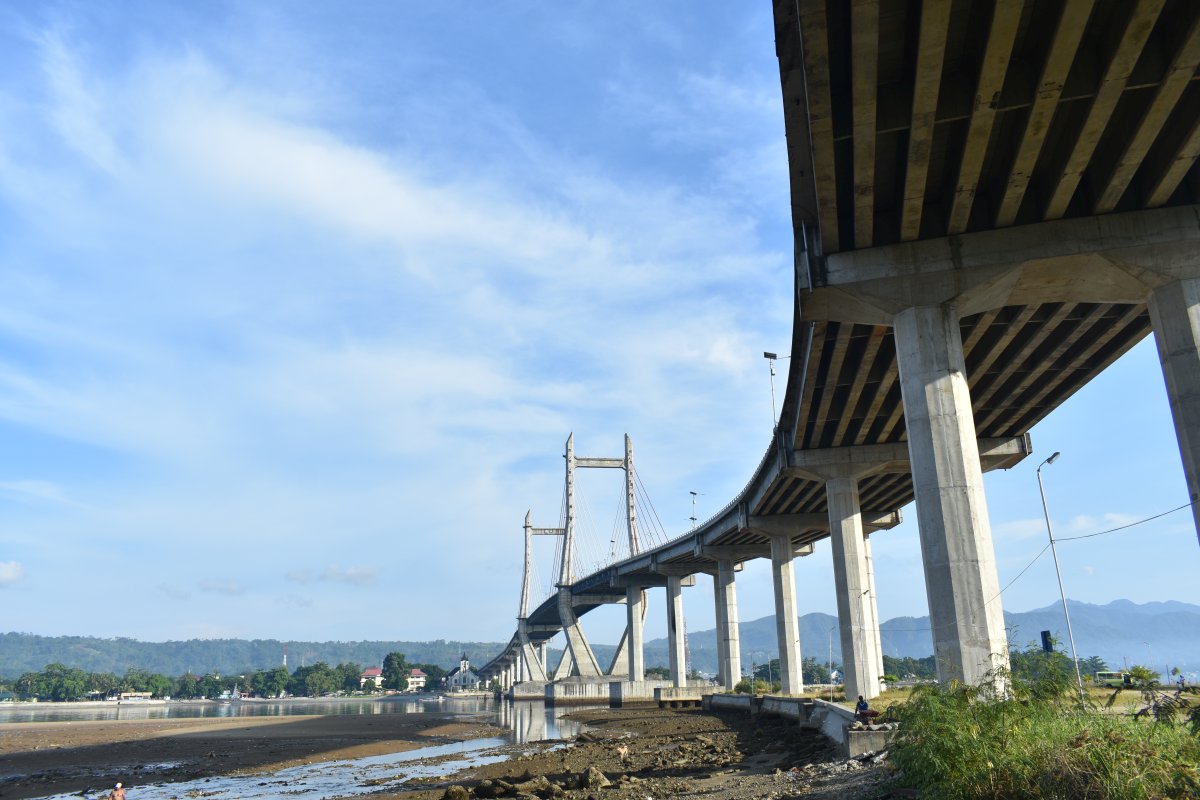
Lubang Buaya Morella Beach (Not a beach!)
Driving east along the coast through small villages with colourful markets, it took us less than an hour to reach the next stop. If you are after any popular form of a beach, Lubang Buaya Morella will disappoint you, it is, in fact, a small bay surrounded by a bunch of small cafes on stilts - a very nice snorkelling spot. The whole area was almost empty, but on weekends might be a different picture altogether.

A friendly lady led us to her restaurant/cafe/hut, where she showed us a room in which we can change into our swimsuits. Interestingly, it was obvious that at night, this was actually somebody's bedroom - there was a mattress leaning against the wall and some personal belongings in one of the corners. They also had snorkelling gear for rent and offered drinks and snacks.
Wooden stairs lead into the water, where the beauty was waiting. We went along the right-side wall for several hundred meters - it is a very sharp drop and the clear water allows you to enjoy awesome views of colourful corals and countless types of fish. We even saw a couple of reef sharks, plus a curious-looking thing that looked like a fish, but had legs and walked along the rocks.
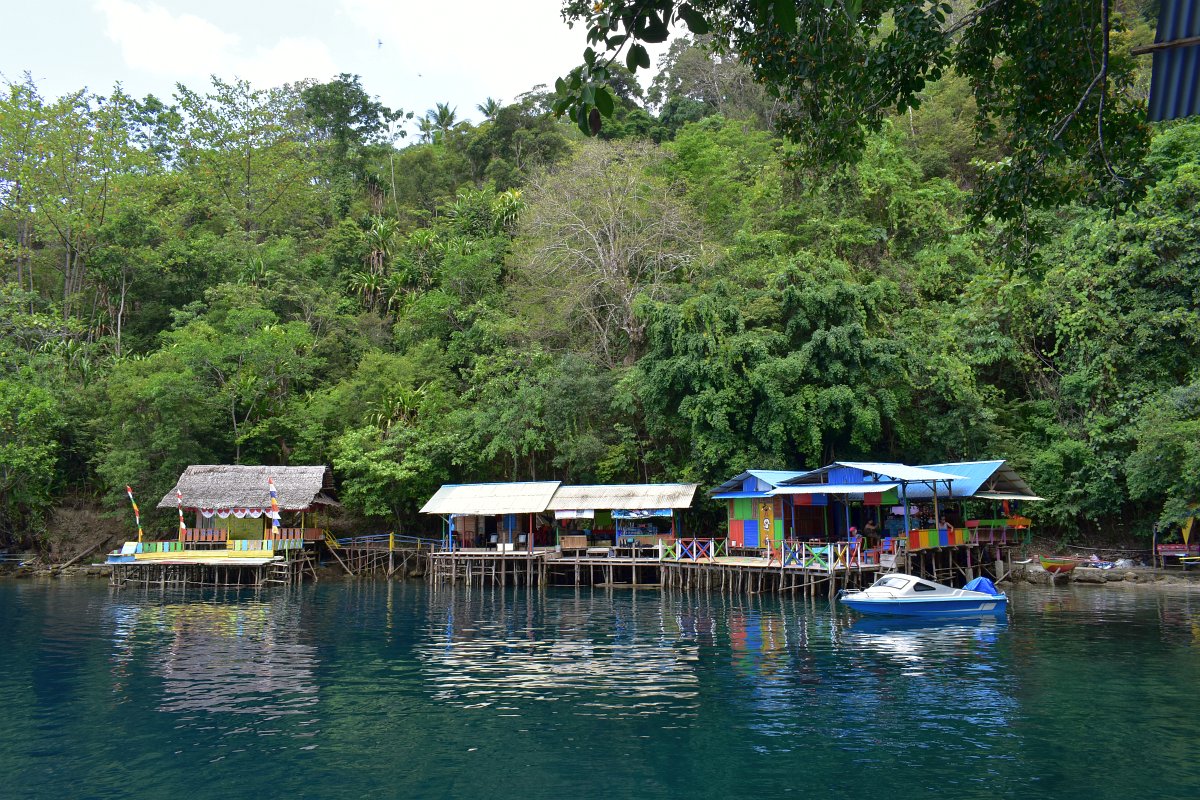
After an hour or so we got tired and got back on the platform. Relaxing on the chairs was nice, and sitting on the edge of the platform we watched the active sea life several meters under us. Schools of fish "patrol" the area, probably used to finding food from the people visiting. It was fun watching them jump out of the water, they do it often and one even hit my foot!
We spent our afternoon there, but a whole day would also be an enjoyable experience for anyone who loves snorkelling. Everything was cheap, for example, parking for the motorbike was 2000 IDR ($ 0.14).

Comments